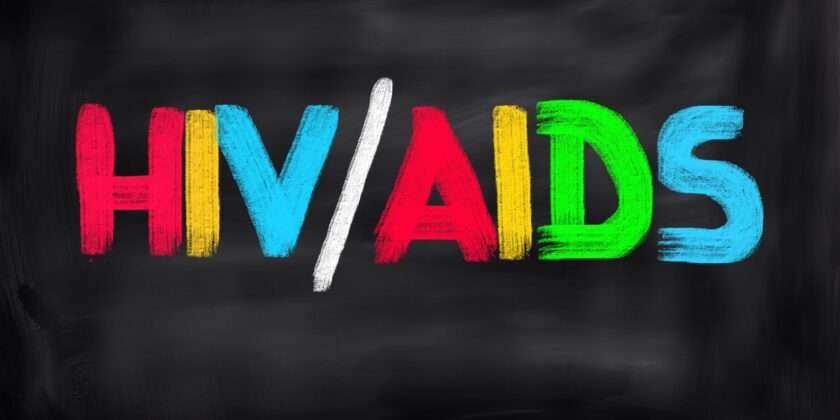The Centers for Disease Control and Prevention (CDC) first reported on June 5, 1981 1, five cases of five young, previously healthy, gay men with a rare lung infection. They had other infections that indicated that their immune systems were not working well. These cases mark the first official reporting of what will become known as the AIDS epidemic.
HIV stands for human immunodeficiency virus. It kills or damages the body’s immune system cells. AIDS stands for acquired immunodeficiency syndrome. It is the most advanced stage of infection with HIV.
Here are some facts about HIV/AIDS and African-Americans 2 from the CDC:
- African Americans accounted for an estimated 44% of all new HIV infections among adults and adolescents (aged 13 years or older) in 2010, despite representing only 12% of the US population; considering the smaller size of the African-American population in the United States, this represents a population rate that is 8 times that of whites overall.
- In 2010, men accounted for 70% (14,700) of the estimated 20,900 new HIV infections among all adult and adolescent African Americans. The estimated rate of new HIV infections in African American men (103.6/100,000 population) was 7 times that of white men, twice that of Latino men, and nearly 3 times that of African American women.
- In 2010, African-American gay, bisexual, and other men who have sex with men represented an estimated 72% (10,600) of new infections among all African American men and 36% of an estimated 29,800 new HIV infections among all gay and bisexual men. More new HIV infections (4,800) occurred among young African-American gay and bisexual men (aged 13-24) than any other subgroup of gay and bisexual men.
- In 2010, African-American women accounted for 6,100 (29%) of the estimated new HIV infections among all adult and adolescent African Americans. This number represents a decrease of 21% since 2008. Most new HIV infections among African-American women (87%; 5,300) are attributed to heterosexual contact. The estimated rate of new HIV infections in African-American women (38.1/100,000 population) was 20 times that of white women and almost 5 times that of Hispanic/Latino women.
- At some point in their lifetimes, an estimated 1 in 16 African-American men and 1 in 32 African-American women will be diagnosed with HIV infection.
- In 2012, African-Americans had the largest percentage (47%) of the estimated 47,989 diagnoses of HIV infection in the United States.
- By the end of 2011, an estimated 265,812 African-Americans diagnosed with HIV infection ever classified as stage 3 (AIDS) had died in the United States.
The numbers indicate that Black Men have a much greater problem with HIV/AIDS than African-American Women. Black Men are the main reason Black Women are contracting HIV/AIDS today! Black Americans face some challenges that contribute to the higher rates of HIV infection. The greater number of people living with HIV in black communities and the fact that African-Americans tend to have sex with partners of the same race/ethnicity means that they face a greater risk of HIV infection with each new sexual encounter according to the CDC.

The estimated rate of new HIV infections in Black Women 20 times that of white women and almost 5 times that of Hispanic/Latino women.
We must work together on HIV/AIDS!
Jay Harold worked as a pharmacist in the Infectious Disease Department of a hospital in the early 1990’s. Providing treatment and care of HIV/AIDS patients were Jay Harold’s primary job. The American Public became aware of AIDS epidemic because of extensive media coverage of several high profile people with the disease. Ryan White’s3 battle with AIDS prompted the United States Congress to pass a law funding HIV treatment 4. Earvin “Magic” Johnson’s5 announcement that he is HIV-positive in November of 1991 received worldwide coverage. Money was pouring in for research and treatment at the beginning. The HIV/AIDS patients that Jay Harold treated in the early 1990s were almost all white males of financial means.
The CDC reported in late 1995 that they had received over 500,000 cases of AIDS 6 from state and territorial health departments. Around this period, Jay Harold began to see more African-American patients with AIDS. By 2010, 44% of all new HIV infections were among African-Americans according to the CDC. The number of African-Americans with HIV/AIDS has increased to the point of crisis. Why?
A report by the CDC 7 makes the case that Poverty may account for some of the racial and ethnic disparities found in HIV prevalence rates for the overall U.S. population–46% of blacks and 40% of Hispanics live in poverty areas compared to just 10% of whites.
There are many resources available today from the CDC and the National Institutes of Health 8 on the treatment and prevention of HIV/AIDS. Jay Harold asks the African-American community to take advantage of these government agencies’ collective knowledge of HIV/AIDS.
Click this link to get free Health and Wealth information to improve your life. Take a car ride through recent Civil Rights History with free “Slow Roll Through Civil Rights” on the Jay Harold website. Enjoyed this post? Share it and read more here.
Bibliography
The following links to articles, reports and websites were used as source material for this post on HIV/AIDS.
1. https://www.aids.gov/hiv-aids-basics/hiv-aids-101/aids-timeline/
2. http://www.cdc.gov/hiv/group/racialethnic/africanamericans/index.html
3. http://hab.hrsa.gov/abouthab/ryanwhite.html
4. ftp://ftp.hrsa.gov/hab/careact.pdf
5. https://en.wikipedia.org/wiki/Magic_Johnson
6. http://www.cdc.gov/mmwr/preview/mmwrhtml/00039622.htm
7. http://www.cdc.gov/hiv/group/poverty.html
8. https://www.niaid.nih.gov/topics/hivaids/Pages/Default.aspx







